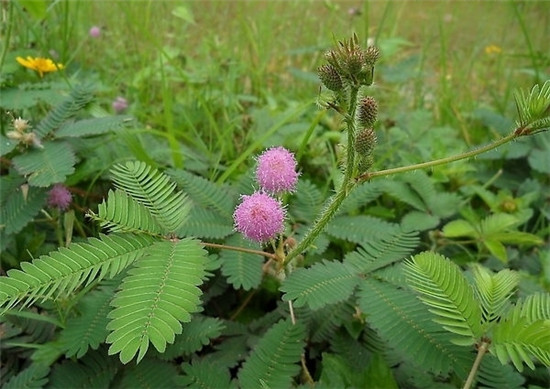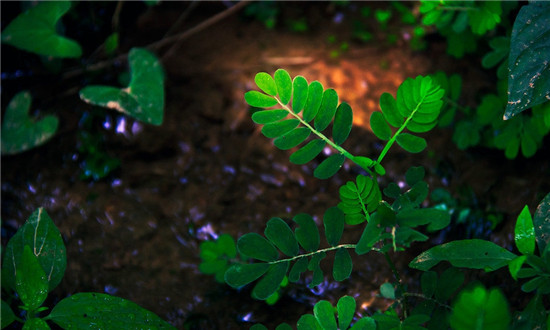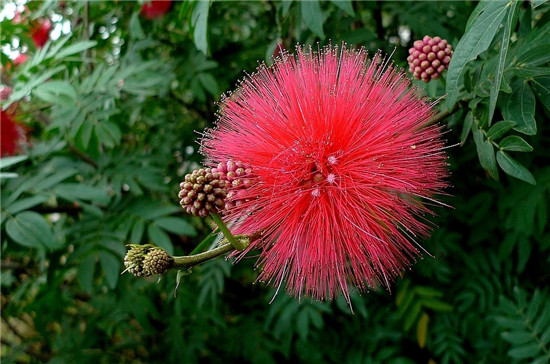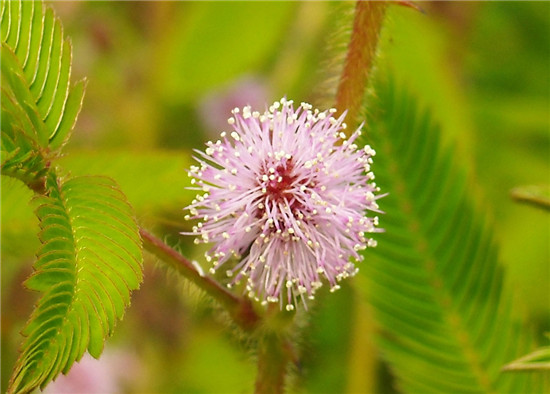[Magnolia] efficacy and function of Magnolia
Mimosa is a perennial herb of the genus mimosa of Leguminosae, which is native to tropical America. Next, let's take a look at the information about mimosa.

A perennial herb of the genus mimosa. The height of potted plant is 20-40cm, and the whole plant has prickles and sharp thorns. The leaves are pinnately compound, with 2-4 pinnae, palmately arranged, 14-48 leaflets, oblong, 0.6-1.1 cm long and 1.5-2 mm wide, with spiny edges and veins. Heads, axillary flowers are light pink, leaflets are extremely sensitive to external stimuli, closed and drooping when touched, and then return to their original state. In winter, more than 10 ℃ in the north can survive the winter indoors, which is an interesting ornamental plant.
Mimosa has strong adaptability, likes warm and humid, grows well in moist and fertile soil, does not have high requirements for soil, is not cold-resistant, likes light, but can tolerate semi-shade, so it is now doing more ornamental plant cultivation in the family. Generally born in hillside jungles and roadside tidal wetlands.

Shy grasslands, native to Central and South America, have now spread to many parts of the world and are considered invasive species in Tanzania, South Asia, Southeast Asia, the United States and many Pacific islands. It is considered to be a listed species in some parts of Australia, such as the Northern Territory and Western Australia. It is considered a recommended listed species in Queensland, Australia. It is distributed in Nigeria, Seychelles, Mauritius and East Asia but is not considered an invasive species.
Why is the mimosa shy?
Reason why mimosa is "shy" 1
Mimosa cells are supported by a small reticular protein called actin. When mimosa produces closed movement, the phosphoric acid of actin will fall off. As long as the mimosa is allowed to absorb compounds that do not let the phosphoric acid fall off, the touch will not change.
When the thigh actin bundle is dispersed, the cells are destroyed, resulting in water running out, resulting in closed movement. Actin is commonly found in the muscle fibers of animals and is related to muscle stretching. Unexpectedly, it also exists in mimosa, which can be said to be quite rare.

The reason why mimosa is "shy" 2
The leaves and petioles of mimosa have a special structure. At the base of the petiole and at the base of the leaflet of the compound leaf, there is a relatively inflated part called the leaf pillow. The leaf pillow is the most sensitive to stimuli. As soon as it touches the leaf, the stimulus immediately spreads to the leaf pillow at the base of the petiole, causing the two small leaves to close, with greater kinetic force, not only to the leaflet pillow, but also quickly to the leaf pillow at the base of the mimosa petiole, and the whole petiole droops.
Although the mimosa is a little "shy", it is very easy to raise it, there are no special requirements for the technology to grow it, and no special attention needs to be paid to its daily management.

The requirements for nature's climate and sunshine are not strict, but it must be a loose and fertile soil and a humid environment. As long as it is planted in the season suitable for its growth and weeded regularly, the number of fertilizers is not too much to prevent the occurrence of insect pests.
The above is all the contents of the Mimosa materials that I have summarized for you. I hope this article can help you. Please continue to follow us.
Related
- Wuhan Hospital Iron Tree Blooming Result Was Instantly Frightened by the Gardener Master
- Which variety of camellia is the most fragrant and best? Which one do you like best?
- What is the small blue coat, the breeding methods and matters needing attention of the succulent plant
- Dormancy time and maintenance management of succulent plants during dormancy
- Minas succulent how to raise, Minas succulent plant pictures
- What are the varieties of winter succulent plants
- How to raise succulent plants in twelve rolls? let's take a look at some experience of breeding twelve rolls.
- Attention should be paid to water control for succulent plants during dormant period (winter and summer)
- Watering experience of twelve rolls of succulent plants
- Techniques for fertilizing succulent plants. An article will let you know how to fertilize succulent plants.



